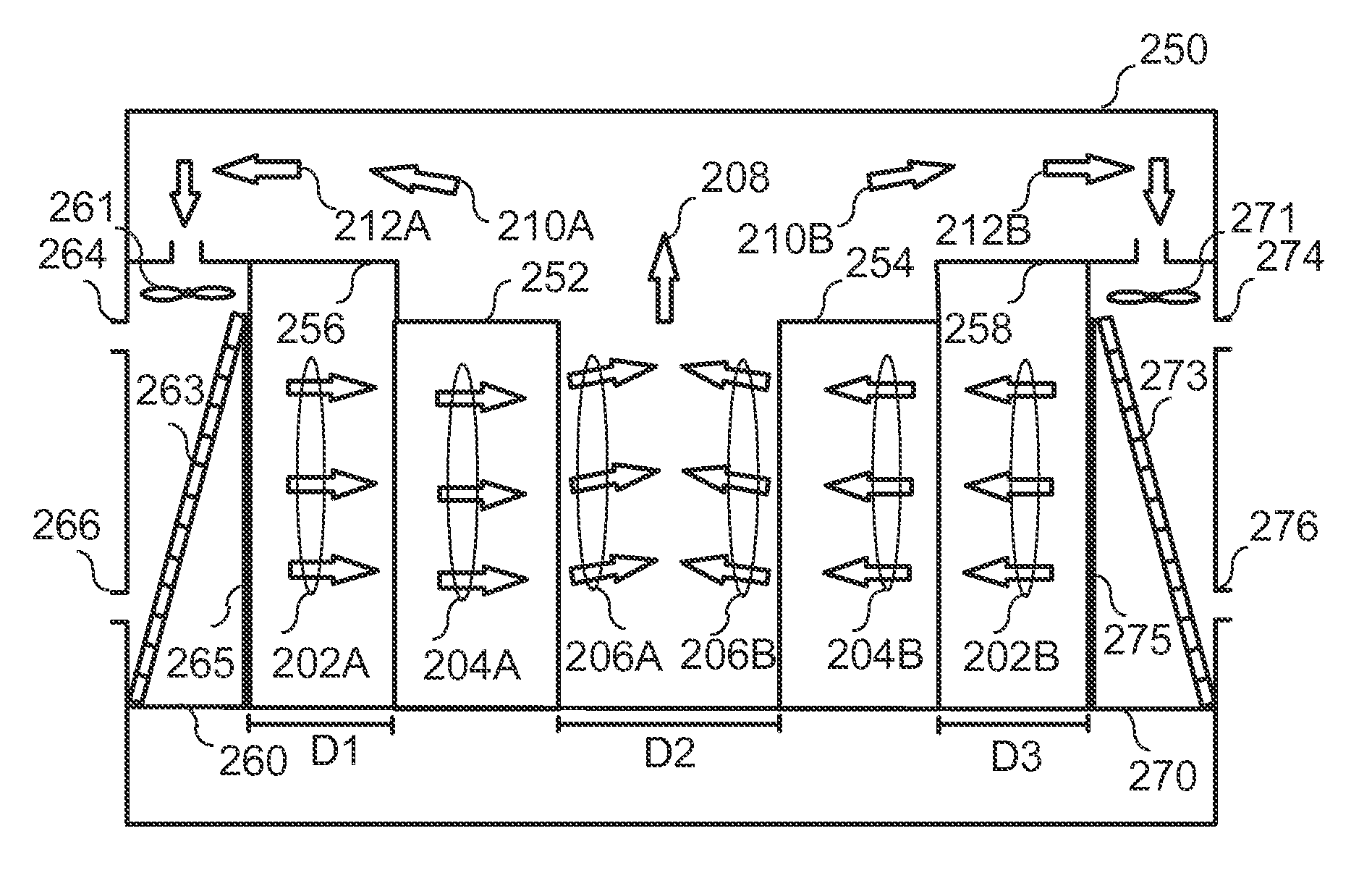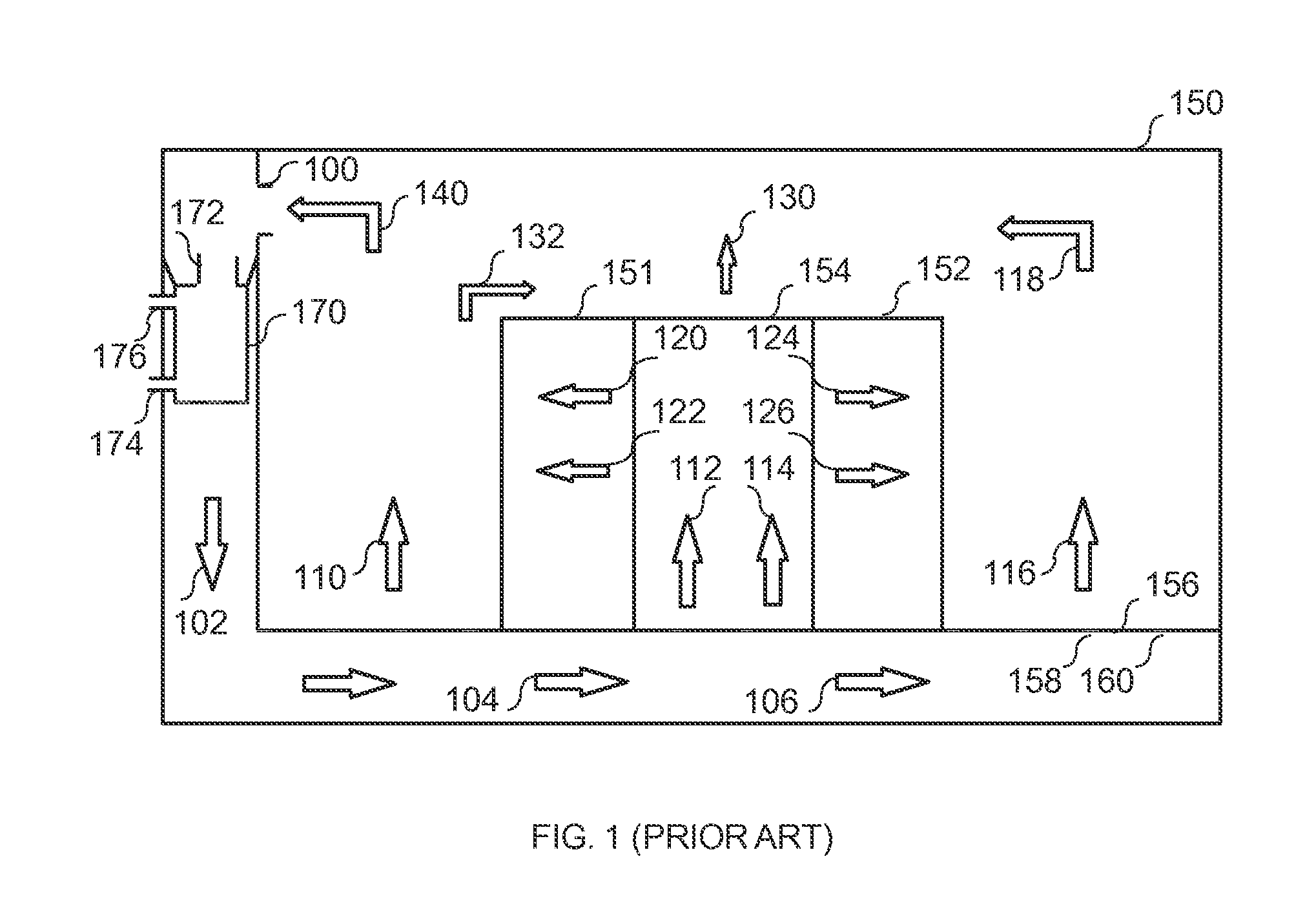Method and system for cooling apparatus racks
a technology for cooling apparatus and racks, applied in the field of cooling, can solve the problems of increasing the cost of data center floor space, not being economical to space computer units, and producing heat typically by computer units and electrical cables, so as to reduce the overall cost of data center cooling, increase capacity, and increase heat load
- Summary
- Abstract
- Description
- Claims
- Application Information
AI Technical Summary
Benefits of technology
Problems solved by technology
Method used
Image
Examples
Embodiment Construction
[0038]Reference will now be made in detail to the embodiments of the present invention, examples of which are illustrated in the accompanying drawings.
[0039]FIG. 2 illustrates a system for cooling apparatus racks in one embodiment of the invention. The system comprises a first cooling unit 260 and a second cooling unit 270. The cooling units may be similar as common air conditioning units or CRAC units. An example of a preferred embodiment for a cooling unit suitable for the invention is disclosed in EP958720B1.
[0040]The cooling unit may also have a primary cooling circuit with internal cooling battery. The primary cooling circuit may be coupled to a secondary cooling circuit that dissipates the heat load by free cooling, chillers or to preferred location outside the data centre, such as to water from a river or to outdoor air. The secondary cooling circuit may be any system known to a skilled man in the art.
[0041]Cooling units 260 and 270 have respective primary cooling circuit inl...
PUM
 Login to View More
Login to View More Abstract
Description
Claims
Application Information
 Login to View More
Login to View More - R&D
- Intellectual Property
- Life Sciences
- Materials
- Tech Scout
- Unparalleled Data Quality
- Higher Quality Content
- 60% Fewer Hallucinations
Browse by: Latest US Patents, China's latest patents, Technical Efficacy Thesaurus, Application Domain, Technology Topic, Popular Technical Reports.
© 2025 PatSnap. All rights reserved.Legal|Privacy policy|Modern Slavery Act Transparency Statement|Sitemap|About US| Contact US: help@patsnap.com



